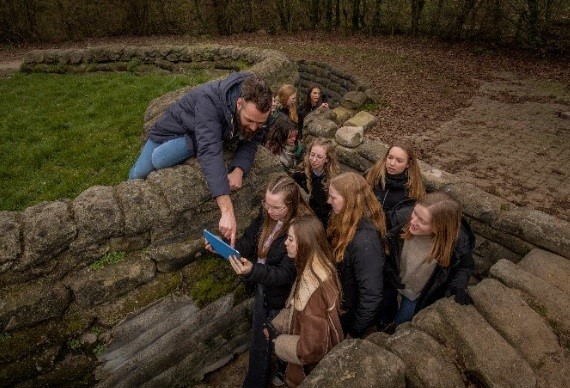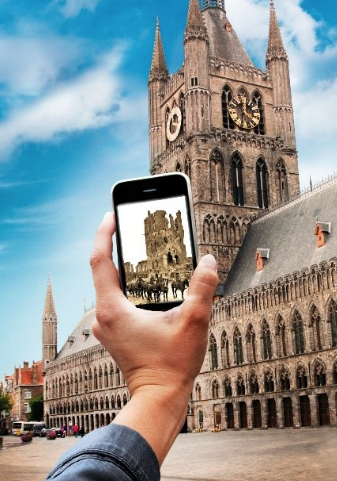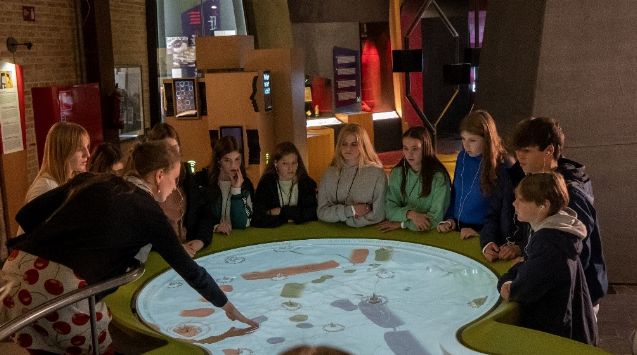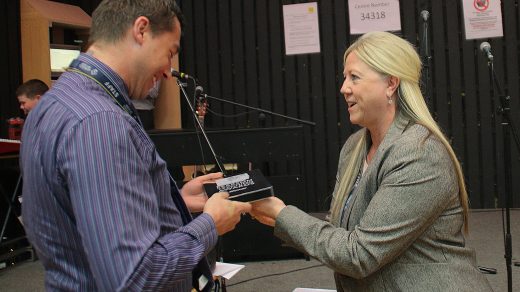Interested in a historical trip to the In Flanders Fields museum with your school?

The In Flanders Fields Museum brings the story of the First World War to life through thought-provoking, interactive displays. Housed in the rebuilt Cloth Hall of Ypres, Belgium, a visit to the museum is the ideal starting point to take your school on a battlefield tour to Ypres and Flanders Fields.
Museum at the heart of the Ypres Salient
During World War One, in the Ypres area, both armies dug in. From then on, solders fought from a system of trenches and mining galleries. In late October 1914, a bulge formed in the Front Line on the east side of Ypres. The city found itself in the middle of this salient. Known as the “Ypres Salient”, it became one of the most notorious war zones along the Western Front.
For the soldiers manning the trenches, every day became a life-and-death twist of fate. For the inhabitants of the city, daily life was made impossible. Houses were destroyed, valuable heritage sites such as churches and the Cloth Hall were shelled to rubble. The ruin of this magnificent Cloth Hall symbolises the destructive power of war, while its reconstruction shows impressive resilience. Today, inside the rebuilt Cloth Hall, the In Flanders Fields Museum is housed.

How was the museum named?
The museum is named after the poem ‘In Flanders Fields’, written by Canadian army doctor John McCrae. John wrote the lines in May 1915 at his aid post at Essex Farm, three kilometres north of the In Flanders Fields Museum. Soon after its publication on 8 December 1915, the poem became well known among British soldiers. The symbol of the poppy is still present in the museum and the landscape today.
Why should a battlefield trip start at In Flanders Fields Museum?
The In Flanders Fields Museum focuses on the human experience of war. Hundreds of authentic objects give a captivating overview of wartime life. Dynamic and experiential displays tell the story of five years of warfare. Lifelike characters revive testimonies of soldiers but also experiences of refugees and civilians. A personalised poppy wristband pairs the students with a particular eyewitness. These various narratives confront students with the consequences of war and highlight how relevant its themes remain today.
A visit to the permanent exhibition will equip students with stories from both sides of the Front Line and introduce them to various eyewitness accounts. It is also possible to climb the belfry (bell tower). With more than 200 stairs, it’s worth the effort to give students a bird’s-eye view of the former Ypres Salient battlefield.

Learning inside and outside the museum
Wouter, Ann-Sophie and Sien – the learning team of the In Flanders Fields Museum – are assisted by an enthusiastic group of educational volunteers. Their job is to make the complex history of the First World War accessible to teachers and their students.
Sien said: “Teaching about the First World War is not just about describing what happened here a hundred years ago. It is also about looking at the similarities, drawing lessons from the past, and teaching students to be vigilant about the mechanisms that drag a whole community into war. In Flanders Fields, young people see what war does, on both sides of the Front. We go out with the group and let people who have lived through the war speak. These are fascinating encounters for young people from all over the world.”
The museum’s educational programme includes several tools to make a visit more captivating. A member of the learning team can guide the students through the museum, with or without a thematic focus. Students can also explore the museum individually with an audioguide.
On the museum’s website, teachers can find a set of questions for a self-led visit to help students reflect on the stories they see and hear in the museum. In addition, the learning team brings the history of the First World War to life by honing in on the personal stories of eyewitnesses and by offering insight into the area where the battles raged.
Please consult the museum’s website for In Flanders Fields’ full educational programme of guided tours, workshops and daytrips.
During the newly developed day trip ‘The Salient Illustrated’, students discover the former battlefields of the northern Ypres Salient. A visit to the museum and a workshop will ensure they are well prepared to explore the area. During the ‘tablet walk’ in the afternoon, students visit two battlefield cemeteries and the recently renovated site of theYorkshire Trench & Dugout.
As they walk through the only British trench, still in its original location, they will compare the contemporary situation with historical images, videos and aerial photographs on their tablet. The large landscape illustration by British cartoonist Dave Chisholm helps them understand life in the trenches and shows how the Yorkshire Trench fitted into the larger trench system.
If you are interested in the educational programmes of the In Flanders Fields Museum, subscribe to the museum’s newsletter to stay informed. You can download their brochure full of educational information for free here: https://www.inflandersfields.be/en/register-educational-brochure?utm_source=cppm&utm_medium=advertonline&utm_campaign=uk





